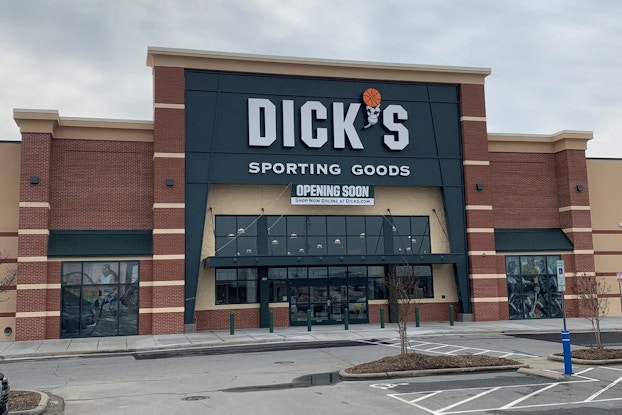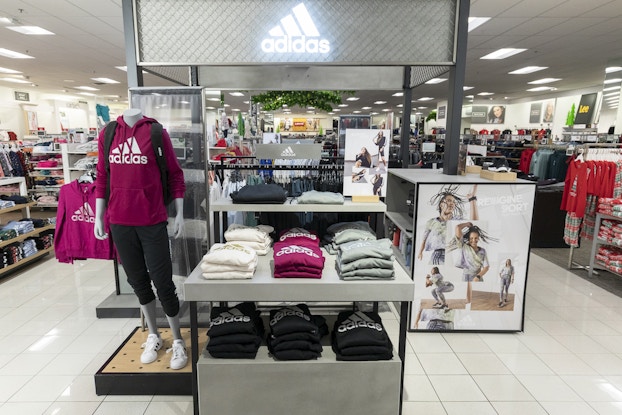
Why it matters:
- Amid a changed economic landscape, traditional brands can no longer rely on pricing strategies based on an annual seasonal calendar.
- Many consumers will continue to feel economic pressure, while others have savings and pent-up demand.
- Against that backdrop, brands can use this time to go back to the drawing board to optimize their pricing and promotional strategies via data analytics.
As the economy slowly lurches back toward what many describe as a “new normal,” brands will have to deploy their pricing strategies carefully amid a minefield of variables that could impact consumer behavior.
One strategy that brands remain committed to is promotional optimization. With production costs rising, and pent-up demand for many products rising as well, companies need to protect their profit margins and make sure they are not using promotional pricing unnecessarily to drive sales that might have occurred anyway at full price.

Interested in a small business membership?
Find out how the U.S. Chamber of Commerce can help your company grow and thrive in today's rapidly-evolving business environment. Connect with our team to learn how a small business membership can benefit your bottom line and help you achieve your goals.
There are also opportunities to use promotional analytics to drive sales of “affinity” items, which are those products that are associated with the promoted items. Some companies, including Kohl’s, have cut back on promotional activity and instead focused more on everyday value and more personalized offers.
The year ahead also poses other unique challenges for businesses pricing strategists. Traditionally, brands base their pricing on annual patterns that are adjusted for changes in their costs and tweaked to reflect other considerations, such as competitive activity in the market. This year, however, comparisons with last year — or any previous year, for that matter — are irrelevant.
“Companies can’t go back to that whole one-year model,” Ellen Kan, partner in the New York office of consulting firm Simon-Kucher & Partners, told CO—. “Decisions can’t be made with a long lead time. Companies, especially big companies, have to think about more ways to be agile and nimble.”
In addition, she said, companies will have to make some assumptions about which consumer shopping behaviors that changed during the pandemic, such as relying more heavily on e-commerce, will continue in the years ahead.
Food retailers, for example, saw sales surge last spring and fall as consumers stocked up on shelf-stable items, made fewer trips overall to the store and shopped online more often. Those companies will need to decide how they will use pricing as a tool to drive traffic back into the stores or to retain those online shoppers.
[Read here on how to set a pricing strategy.]
It's a brave new world. You can create your own future, and the best retailers are doing that.Matthew Pavich, managing director of global strategic consulting, Revionics, an Aptos company
New approaches to optimizing promotions
One grocery chain, 80-unit Shop ’n Save, is implementing a new pricing analytics solutions from Daisy Intelligence that seeks to optimize promotions from the perspective of their total-store impact, rather than the impact on the item itself.
Daisy’s “Halo Merchandising” approach considers the sales and margins gained from the addition of products to the shopping basket that are affiliated with the items promoted, for a more holistic view of the impact of promotions. A promotion on hot dogs, for example, might lead to additional sales of buns, relish, ketchup and mustard.
“Prior to bringing on Daisy, like all retailers, we made decisions on what items to promote based on single-item movement,” said Tom Charley, vice president of Shop ’n Save operator Charley Family Shop ’n Save. “While we have done the best that we can based on our tools, we understand there are more advanced ways of going to market today.”
Another retailer that has adopted a new promotional strategy is Dick’s Sporting Goods, which recently implemented the PromoSmart solution from Impact Analytics. With 850 store locations and thousands of promotions each month, Dick’s was seeking to move away from the repetitive promotions that it said were causing a decline in margins, according to a case study provided by Impact Analytics.
The new solution uses multiple machine learning models that analyze historical data to generate promotional recommendations that take into account seasonality and trends, as well as product affinities and cannibalization.
Implementing PromoSmart “helped us eliminate the toxic promos, adding millions to our bottom line,” the retailer said.
[Read here on five pricing strategies to woo customers.]
Leaning into an everyday value strategy
Kohl’s Corp. is another retailer that revamped its pricing and promotional strategy during the past year in an effort to improve profit margins, leaning into an everyday value strategy.
“We continue to reduce the number of general promotional offers and stackable offers [combined discounts], while increasing usage of price-led events to offer more value every day,” said Michelle Gass in the company’s recent year-end earnings call with analysts. “We are also leaning into more targeted and personalized offers to drive efficiencies.”
Chuck Davenport, a partner in the Atlanta office of Bain & Co., cited one example of a retailer, which he declined to identify, that took advantage of the changes in customer behavior during the pandemic to reduce its promotional and discounting activities, and align its promotions between online and in-store.
In addition, the retailer added more premium lines, but made an effort to make sure there was a clear distinction between its higher-end brands and its legacy offerings.
“Because of the tightening of their promotional policies, they're actually keeping each one of those categories stratified, and keeping the premium products in the premium lane and the lower-end products in the lower-end lane,” said Davenport. “It will be interesting to see if that is successful, but I'm glad to see that companies are starting to experiment with doing that.”
Other pricing strategies he sees emerging include B2B brands using technology to better control pricing, rather than leaving it in the hands of their sales teams, who are often incentivized to offer reduced prices to drive volume.

One key pricing consideration: Rising production costs
A key metric underlying pricing decisions is rising inflation in the cost of commodities and other raw materials, which comes as a large portion of consumers are struggling financially to recover from the pandemic.
A recent report from data analytics firm dunnhumby found that 43% of U.S. consumers surveyed said they were paying more for food than they were before the pandemic, and many of those said they were taking some action because of it, including shopping at stores with everyday low prices, searching online for sales and coupons, buying larger pack sizes and stocking up on products that are on sale.
Some makers of consumer-packaged goods, including Procter & Gamble, have said that increases in the cost of ingredients are forcing retail price increases. P&G said in late April that it would implement price increases on certain products in September.
Many observers believe, however, that a large portion of the population has pent-up demand for goods and services, which will give some brands the ability to pass along higher prices without fear of hurting their margins.
One pricing case study to watch in the food industry will be how the plant-based meat alternative manufacturers, including Impossible Foods and Beyond Meat, price their products now that they are ubiquitous, said Kan of Simon Kucher & Partners. The products have seen their sales continue to climb during the pandemic, even though they carry a premium price tag.
Now that they are gaining enough scale to lower their prices to be more competitive with traditional meat items, it will be interesting to see if even more consumers try these alternative proteins, she said.
Disruption in demand
Matthew Pavich, managing director of global strategic consulting at Revionics, an Aptos company, and provider of automated pricing solutions, said the disruption in consumer demand caused by the pandemic has had broad ramifications for pricing strategies. Some product categories, such as shelf-stable grocery items and cleaning essentials, have seen soaring demand, while others, such as fashion, have seen demand curve sharply in the other direction.
“We have a whole lot of different things going on, and it's about being able to capture that and deliver a pricing strategy that translates to a customer's need now in this moment,” said Pavich. “That's the fundamental challenge, and it looks different for different retailers.”
Some retailers will use aggressive pricing to drive consumers back into their stores with greater frequency, and others will streamline their promotions. For many retailers, the new operating environment presents an opportunity to update their omnichannel pricing strategies.
“Companies have this unique opportunity to start from scratch and rebuild their pricing strategy,” said Pavich. “Whether they already had a fairly robust strategy with some analytics and some optimization and some consumer insights, or they are starting from scratch, there's an opportunity now to take their data, take best practices, take what consumers are telling them and really invest.
“It's a brave new world,” he said. “You can create your own future, and the best retailers are doing that.”
In general, the enormous challenges presented by current market conditions will force all companies to take a step back to carefully examine their pricing strategies, rather than pursuing business as usual.
“When everything's good and the sun is shining on all companies, and everyone’s growing, [companies] can get a little lazy,” said Davenport of Bain & Co. “But when business tightens, and the supply tightens, it gives people a real motivation to get sharp.”
CO— aims to bring you inspiration from leading respected experts. However, before making any business decision, you should consult a professional who can advise you based on your individual situation.
Follow us on Instagram for more expert tips & business owners stories.
CO—is committed to helping you start, run and grow your small business. Learn more about the benefits of small business membership in the U.S. Chamber of Commerce, here.







